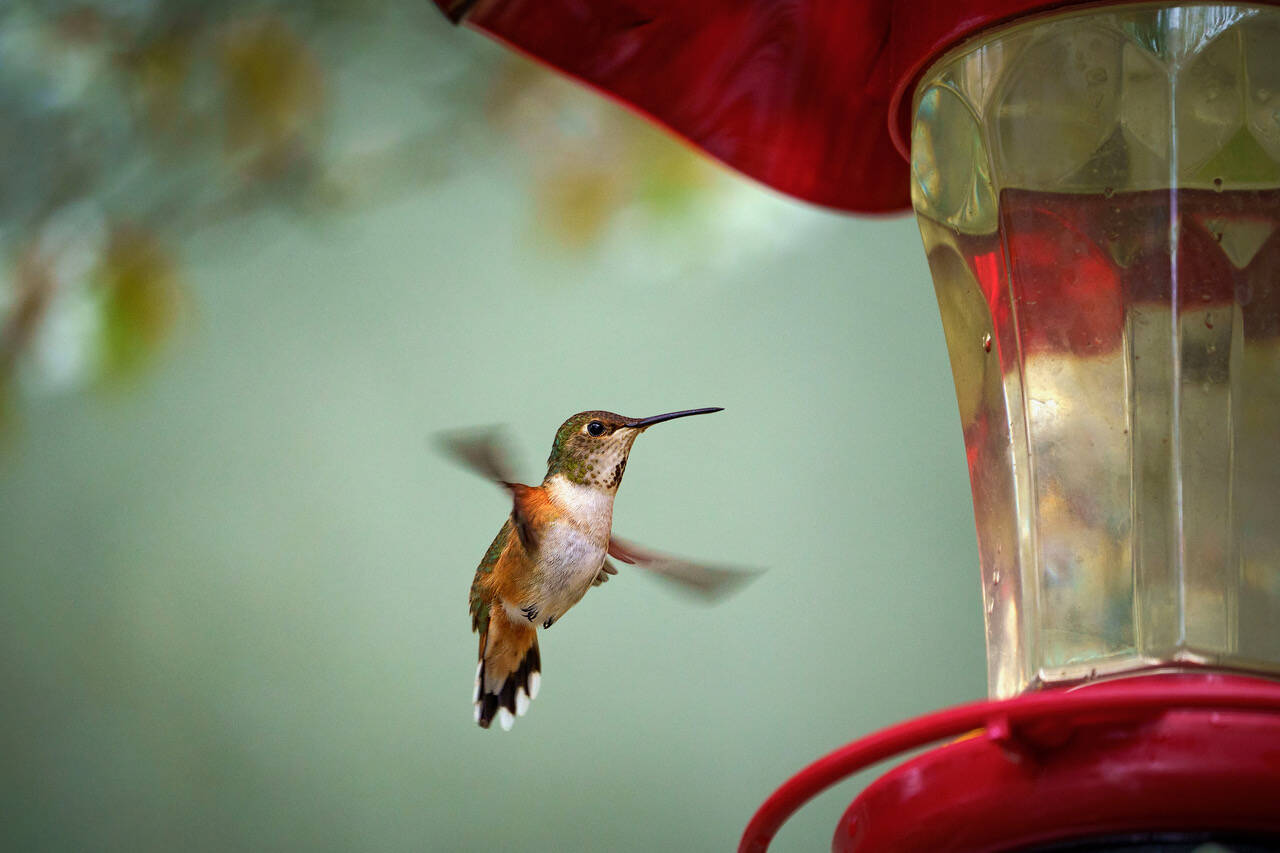With the first blossom of salmonberry, Whidbey Islanders may have noticed a hum around their bird feeders.
This time of year, Anna’s and rufous hummingbirds migrate north for Washington’s spring blooms, said Ann Linnea of the Whidbey Audubon Society. Hummingbirds are the smallest migrating bird, with over 330 species found in North America.
Four of these species can be found in Washington: Anna’s, rufous, Calliope and black-chinned, though Calliope and black-chinned are rare. Unlike many other migratory birds traveling in flocks, hummingbirds migrate solo and as far as 500 miles per day.
Some Anna’s hummingbirds stay for the winter in the Pacific Northwest, Linnea said, but this is a newer phenomenon, a symbiosis with friendly humans. People who put out feeders in the wintertime must keep them up, because even leaving for the week can cause all the birds in their yard to perish.
“Staying in the winter for tiny little being like a hummingbird, it’s a risky endeavor for sure,” Linnea said.
Each night, hummingbirds enter a torpor, she said, a short-term hibernation. They’ll continue to do this until summer.
“Then, first thing in the morning, neowwww,” Linnea said, mimicking the noise of something zooming through the sky. “They’re up, and they need sugar water.”
That’s why the feeders are so important in the colder months, she said. If they can’t find enough nectar from flowers, feeders will keep them alive until summer.
For hummingbird feeders, people should dissolve a quarter cup of sugar per cup of water, she said. Do not use dye because it’s bad for the birds and the feeders are colorful enough to attract them.
Baby hummingbirds, about the size of an insect, will be born any day.
“I can tell by how many hummers I have in my feeders and how fast the sugar water is going down we have mamas right now,” Linnea said.
Hummingbirds are beautiful and fun to watch, she said, as they sometimes aggressively compete over the water.
“It’s a great way to study nature, and it’s right out your window,” she said.
They migrate thousands of miles, the only birds that can truly hover, and few have their agility. In fact, the helicopter was designed by studying hummingbirds.
“Thank goodness they are not eagles,” she said.
Anna’s hummingbirds seduce females by flying imperceivably high and diving down at 60 miles per hour. According to Linnea, they are just one more thing that makes Whidbey fabulous for birding.
“I love their spunk, just watching them flit about my yard,” she said.



